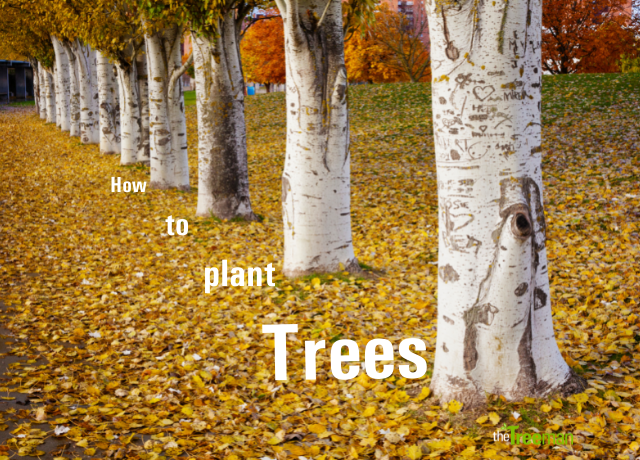
How to plant trees.
How you plant your trees will have a massive impact on how well they thrive. Some trees will experience planting stress and so careful handling and good preparation will help to minimize any shock.
Here are a few things you can do that will ensure they have the best start in the ground…
The trunk flare is where the trunks swell at the base of the tree and this should be partially visible after the tree is planted. Remove some soil if necessary to expose the flare before planting.
Dig your hole 2x as wide as you need to and half as deep. Mix poorer soil with potting mix or compost. If you are in heavy clay soil then consider using a clay breaking product.
Take the tree out of the pot or remove the wrapping and ensure there is no root circling. If there is trim or loosen and straighten them up.
Place the tree at the correct height in the hole, adding soil were needed to achieve the desired level. Do not plant too deep or too shallow as this will be harmful to your tree. Too deep and water can pool around the trunk and too proud, and you will leave some of the roots unprotected and they can dry out as well as struggle to search for nutrients.
Ensure the tree is straight in the hole, checking from other angles.
Gently fill the hole and pat the soil firmly around the tree taking care not to compact the soil too much. Do not stop on the soil around the tree. Let the watering help to bed the soil down.
The tree should be firm and stable in the hole.
Stake trees as required for the first year in the ground, but ensure you remove the stakes after the first 12 months to encourage a strong root system.
Mulch to protect the roots and soil from moisture loss and enrich the soil. Take care not to mulch right up to the trunk.
Prune to the desired shape early to minimize the need for heavy pruning later.
A good time to plant trees is in the dormant season and almost every garden has room for a good specimen tree, you just need to find the right tree.
Enjoy!